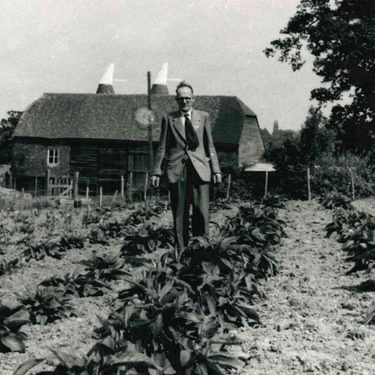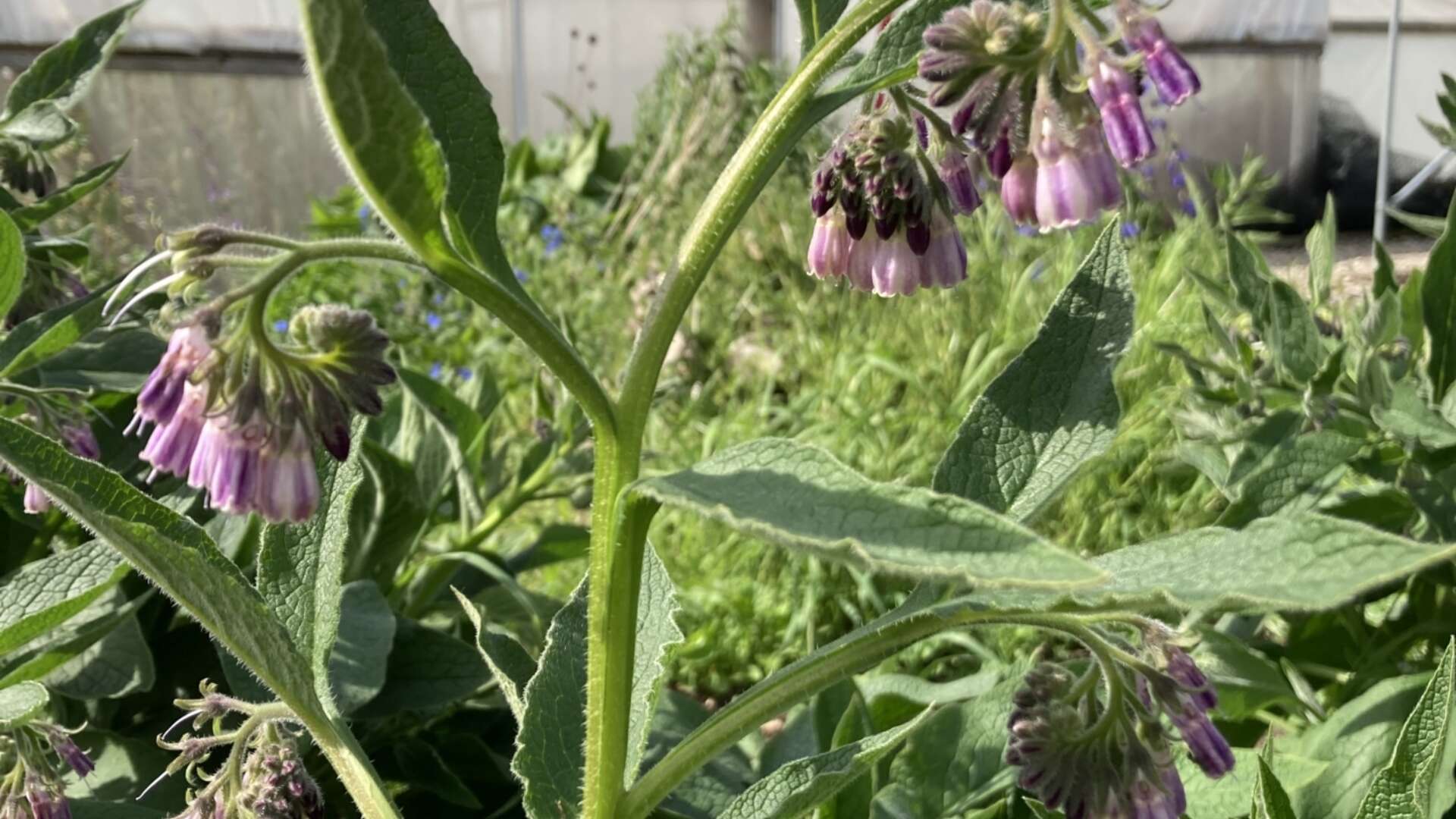
Our history with comfrey
Russian comfrey and Henry Doubleday 🔗
Henry Doubleday, a smallholder and inventor from Essex, originally imported Russian comfrey from St Petersburg in the 19th century with the intention of turning it into a glue for stamps. This didn’t prove to be viable. Yet, more than 60 years later, interest in its medicinal value and use as a high protein fodder crop for livestock intrigued Lawrence Hills.
After writing a book entitled Russian Comfrey in 1953, Hills went on to set up our charity, under the name of the Henry Double Research Association (HDRA), in honour of Doubleday, and based at Bocking in Essex. He had the intention of researching comfrey’s full potential, as he saw it as a way to ‘feed the world’.
Until the end of the 1972, this plant formed an important focus of the organisation with members looking into the nutritional and health qualities in particular, with a view also to seeing whether it could contribute to food security in the UK and abroad.
It was during the 1980s that work moved away from the medicinal possibilities for comfrey, and focused on its fertility benefits.
Comfrey 'Bocking 14' 🔗
Of the various types of comfrey, the best for producing garden fertiliser is Russian comfrey (Symphytum x uplandicum).
After many trials at the charity's original trial grounds, the 'Bocking 14' cultivar of Russian comfrey proved to be the most productive, giving high yields of nutritious leaves with the perfect balance of nitrogen (N). phosphorus (P) and potassium (K).
'Bocking 14' comfrey has large, hairy leaves and tubular, purple flowers borne on tall stems. Plants may reach a height and spread of up to 1m with a substantial tap root growing to depths of 3m.
'Bocking 14', in contrast to the wild comfrey, produces very little viable seed - which means it won't spread. This makes it more suitable for growing in gardens.
Comfrey and Garden Organic today 🔗
Comfrey remains important to Garden Organic (the new name for the Henry Doubleday Research Association) to this day.
At our home at Ryton Gardens, near Coventry, we hold the National Collection of Comfrey, awarded by the charity Plant Heritage.
We care for over 30 varieties of comfrey on site, ensuring that this valuable plant is conserved for many more generations of organic growers.
We also continue to carry out research into comfrey, and do everything we can to encourage as many people to grow it as possible.
You may also like
